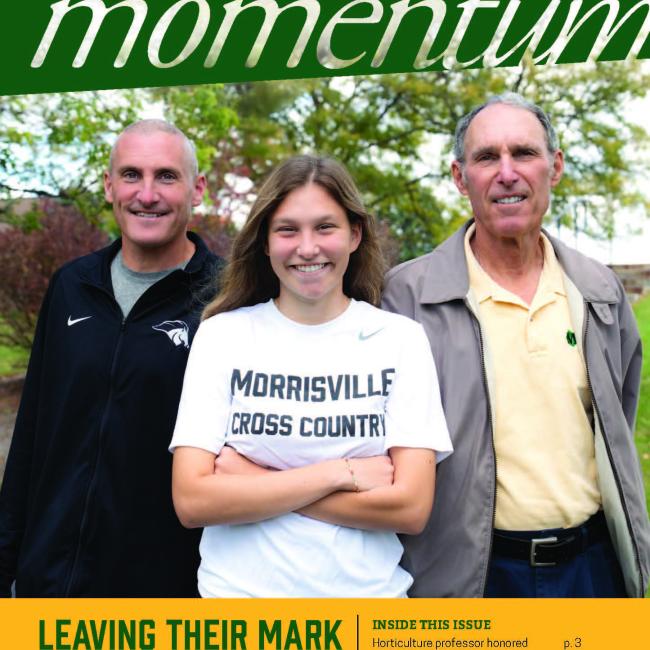Julio Torres Santana ’07 didn’t speak English when he arrived in New York City as a teenager.
No one in his family had ever graduated from college, and his childhood in the Dominican Republic was marked with poverty and hardship.
But his drive to succeed and passion for architecture pushed him to complete an associate degree at SUNY Morrisville and become the school’s first architectural studies student to be accepted into the bachelor’s degree program at Cornell University.
Now, after completing his master's degree at Harvard University, Santana is ready for the next step in a career that once seemed beyond reach.
“When you grow up like I did, you have that urge of wanting to change things for the better,” he said. “I have the responsibility to make a difference, to help society. It is part of my nature.”
A difficult childhood
Santana was raised by his great-grandfather in a primitive, handmade shelter covered by a corrugated tin roof in the La Romana province of the Dominican Republic. The family often spent days without electricity and water, and Santana was sent into the street after school to make money by looking for shoes to shine, and selling candy and ice cream.
Despite the difficult economic circumstances, Santana discovered his love of architecture at age five, when his brother showed him a set of blueprints.
“I was always attracted to form and drawings,” he said. “It was kind of an eye-opening moment for me, that I could do this and make a living.”
SUNY Morrisville was the only college that accepted him after finishing high school in the Bronx, where he lived with family and struggled to keep up academically because of language barriers.
But Santana thrived at Morrisville, where professors praised him as a mature, responsible go-getter.
"When you're poor, you realize the only chance you have to be something is through an education," he said in an interview as an undergraduate at Morrisville. "This is my chance; I have to take advantage of it.”
His studies in the United States expanded his horizons further. At Cornell, he spent a semester abroad in Rome, Italy, and traveled to South America studying the architecture of Ecuador, Peru, Chile, Argentina and Brazil.
The Harvard program took him to Tibet and the Philippines, where he participated in a design exhibition to create modular housing for impoverished communities using recycled shipping containers.

A career in progress
Using networking connections he made at the inauguration of the Sheila Johnson Design Center at SUNY Morrisville, Santana got his first job at KPF, a large architecture firm in New York City with offices across from Bryant Park.
But he left the corporate job to join the founder of the Latin Baseball Hall of Fame in creating a place of honor much like the National Baseball Hall of Fame and Museum in Cooperstown, New York.
“Many Latin players don’t make it to Cooperstown, even though they have great numbers and careers," he said. “They deserve a place to be recognized.”
Santana’s innovative and contemporary design for the complex spoke to many cultures, with a wide public plaza, baseball fields and an iconic accordion-like structure.
But when plans for the proposed museum fell through, Santana’s design work was also shelved.
It was an early lesson in how projects don’t always materialize, no matter how inspired.
“You can have the best idea in the world, but if you don’t have the means to make it happen, it stays on paper as an idea,” he said.
He returned to his hometown to work on designing villas for wealthy residents, acknowledging the disparity between his own upbringing and the homes of his potential clients.
“You can clearly see the division between the poor side and the wealthy side,” he said. “I left with a dream of coming back home and being able to help and give back.”
He finished his studies at Harvard last year and is working as a real estate agent as he tests for his architecture license. He also taught summer classes at Harvard.
“This little kid from a poor town in the Dominican Republic, teaching at Harvard?” he said. “It’s just unbelievable.”
A legacy in the making
Santana said one of his proudest moments was learning that his siblings were preparing for college programs in the Dominican Republic.
This little kid from a poor town in the Dominican Republic, teaching at Harvard? It’s just unbelievable.
He recalled a conversation he had with his mother as an undergraduate student.
“During winter break, she said, ’Mi hijo, tu sabes que tu eres la columna de esta casa’ [my son, you know you are the column of this house],” he wrote in his senior profile published in the Cornell Chronicle.
Santana said he has learned from both his successes and missteps and hopes to carry those lessons into the next phases of his career.
“I think this is a process that I needed to go through,” he said. “The social responsibility I feel to give back, it will take some time. But my story can motivate and encourage others, and I’m learning very valuable lessons that I can use in the future.”


